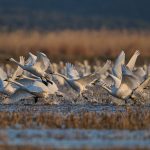TURKISH LITERATURE AND LANGUAGE
Turkish Literature – Turkish belongs to the Altay branch of the Ural-Altay linguistic family. Through the span of history, Turks have spread over a wide geographical area, taking their language with them. Turkish speaking people have lived in a wide area stretching from today’s Mongolia to the north coast of the Black Sea, the Balkans, East Europe, Anatolia, Iraq and a wide area of northern Africa. Due to the distances involved, various dialects and accents have emerged. The history of the language is divided into three main groups, old Turkish (from the 7th to the 13th centuries), mid-Turkish (from the 13th to the 20th) and new Turkish from the 20th century onwards. During the Ottoman Empire period Arabic and Persian words invaded the Turkish language and it consequently became mixed with three different languages. During the Ottoman period which spanned five centuries, the natural development of Turkish was severely hampered.
Then there was the “new language” movement. In 1928, five years after the proclamation of the Republic, the Arabic alphabet was replaced by the Latin one, which in turn speeded up the movement to rid the language of foreign words. The Turkish Language Institute was established in 1932 to carry out linguistic research and contribute to the natural development of the language. As a consequence of these efforts, modern Turkish is a literary and cultural language developing naturally and free of foreign influences. The history of Turkish Literature may be divided into three periods, reflecting the history of Turkish civilization as follows: the period up to the adoption of Islam, the Islamic period and the period under western influence.
Turkish Literature Prior to the Adoption of Islam
Turkish literature was the joint product of the Turkish clans and was mostly oral. The oldest known examples of Turkish writings are on obelisks dating from the late 7th and early 8th centuries. The Orhun monumental inscriptions written in 720 for Tonyukuk, in 732 for Kültigin and in 735 for Bilge Kagan are masterpieces of Turkish literature with their subject matter and perfect style. Turkish epics dating from those times include the Yaratilis, Saka, Oguz-Kagan, Göktürk, Uygur and Manas. The “Book of Dede Korkut”, put down in writing in the 14th century, is an extremely valuable work that preserves the memory of that epic era in beautiful language.
Turkish Literature After the Adoption of Islam
Following Turkish migrations into Anatolia in the wake of the Malazgirt victory in 1071, the establishment of various Beyliks in Anatolia and the eventual founding of the Seljuk and Ottoman Empires set the scene for Turkish literature to develop along two distinct lines, with “divan” or classical literature drawing its inspiration from the Arabic and Persian languages and Turkish folk literature still remaining deeply rooted in Central Asian traditions.
Divan poets did not have independent philosophies, they were content to express the same ideas in different ways. The magnificence of the poet came from his artistry in finding original and beautiful forms of expression. The most famous of the Divan poets were Baki, Fuzuli, Nedim and Nef’i.
Initially based on two foreign literary traditions, Arab and Persian, literature gradually stopped being merely imitative and took on Ottoman national characteristics.
To a certain extent, the Turkish folk literature which has survived till our day, reflects the influence of Islam and the new life style and form of the traditional literature of Central Asia after the adoption of Islam. Turkish folk literature comprised anonymous works of bard poems and Tekke (mystical religious retreats) literature.
Yunus Emre who lived in the second half of the 13th and early 14th centuries was an epoch making poet and sufi (mystical philosopher) expert in all three areas of folk literature as well as divan poetry. Important figures of poetic literature were Karacaoglan, Atik Ömer, Erzurumlu Emrah and Kayserili Seyrani.
Influence of Western Literature on Turkish Literature
Turkish Literature was influenced by the Western Literature. Changes in social, economic and political life were reflected in the literature of the time and the quest for change continued till the proclamation of the Republic. The distinguishing characteristic of the era in literature was the concern with intellectual content rather than esthetic values or perfection of style. The latest period in literature, which is known as the Turkish Literature of the Republican period, came to be influenced by the following literary schools after Divan literary styles had been abandoned: Tanzimat (reforms), Servet-i Fünun (scientific wealth), Fecr-i Ati (dawn of the new age) and Ulusal Edebiyat (national literature).
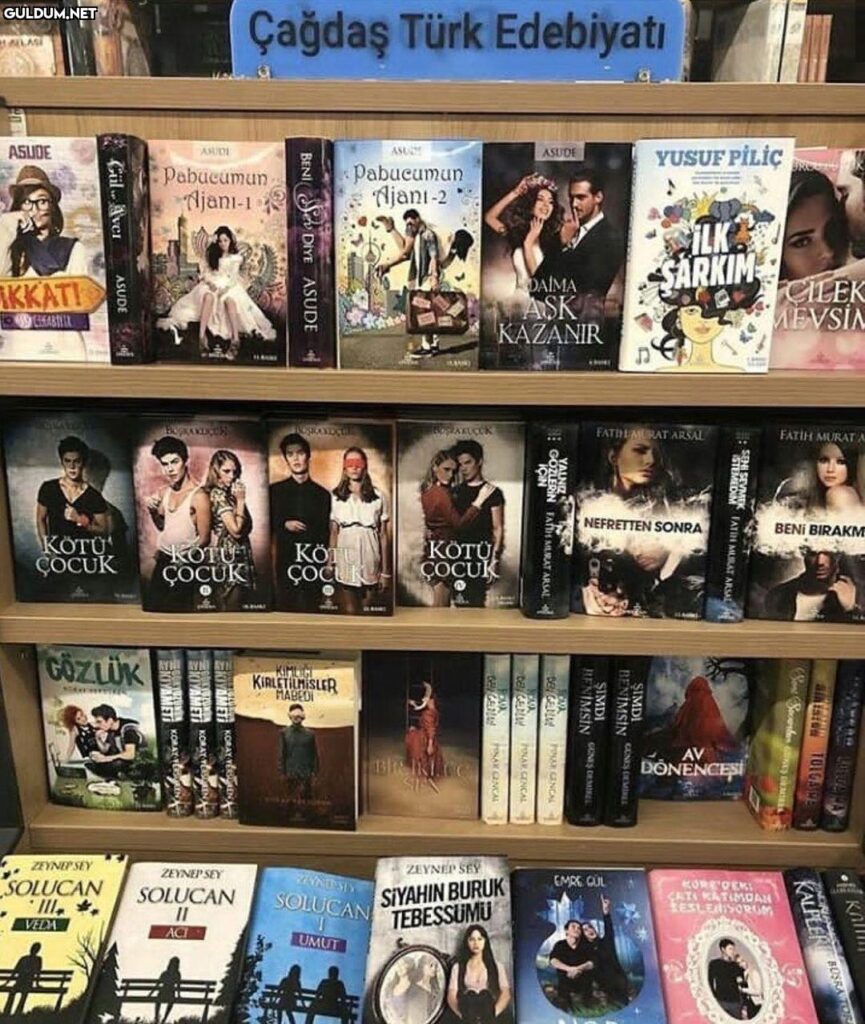
Leading figures in the first period (1860-1880) in Tanzimat literature were Sinasi, Ziya Pasa, Namik Kemal, and Ahmet Mithat Efendi. Leading figures during the second period (1880-1896) were Recaizade Mahmut Ekrem, Abdülhak Hamit, Sami Pasazade Sezai, and Nabizade Nazim.
Tevfik Fikret, Cenap Sahabettin, Süleyman Nazif, Halit Ziya Usakligil, Mehmet Rauf, Hüseyin Cahit Yalçin and Ahmet Hikmet Müftüoglu are the important representatives of this trend. Others who adopted the western approach, but who were outside the group, were Ahmet Rasim and Hüseyin Rahmi Gürpinar who supported the new Turkish literature.
The most interesting Fecr-i Ati poet was Ahmet Hasim. Yakup Kadri Karaosmanoglu and Refik Halit Karay who initially were in the Fecr-i Ati at the start of their careers, attained their true literary identities later in the National Literature Movement.
Mehmet Akif Ersoy and Yahya Kemal Beyatli initially followed independent courses and later joined the National Literature movement. The Tanzimat, Servet-i Fünun and Fecr-i Ati groups who came together to create a modern Turkish literature made great strides towards this aim, but their works stopped short of being a national literature with distinctive characteristics. In spirit, it was French-oriented, in language and style it was traditional and Ottoman.
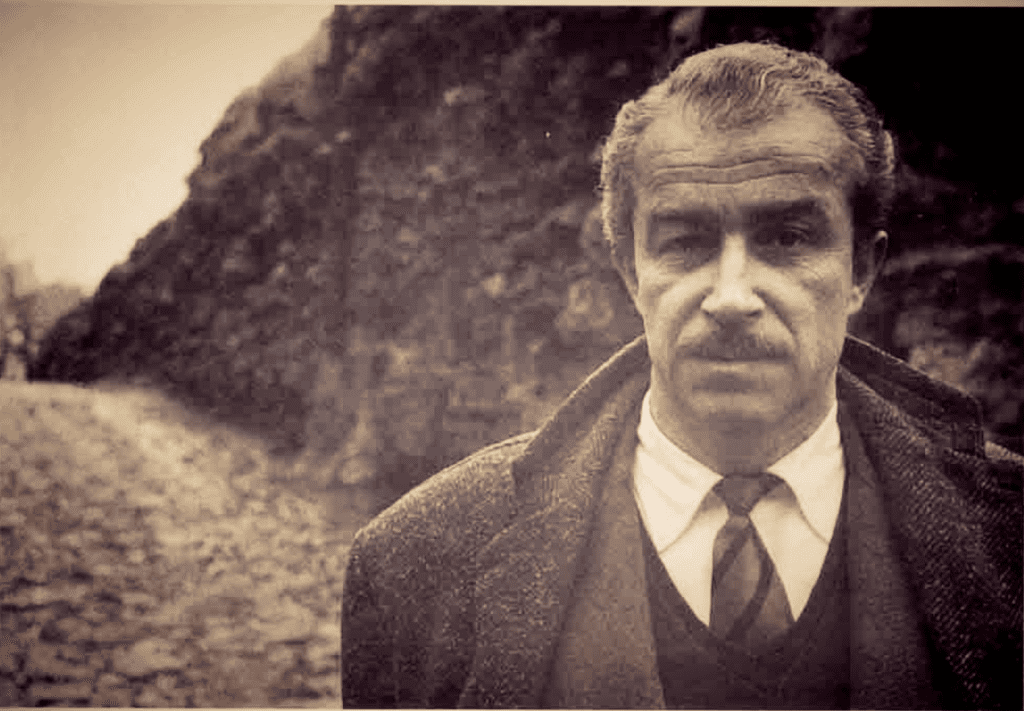
National Literature was created between the years 1911 and 1923. The leading literary figures of the period were Ziya Gokalp, Ömer Seyfettin, Mehmet Emin Yurdakul, Yusuf Ziya Ortaç, Faruk Nafiz Camlibel, Enis Behiç Koryürek, Kemalletin Kamu, Aka Gündüz, Yakup Kadri Karaosmanoglu, Halide Edip Adivar, Halit Karay, Resat Nuri Güntekin, Ahmet Hikmet Müftüoglu, Necip Fazil Kisakürek, Halide Nusret Zorlutuna, Sükufe Nihal, Peyami Safa, and Ahmet Hamdi Tanpinar.
The Republic later encompassed practically all national literary figures in the fields of culture, ideology and literature. The first decade of the Republic bore the stamp of the National Literature movement, wherein the simple clear language, poetic forms and syllabic metre of folk literature and topics from Turkey were favored. The topics, written in simple language, were taken from real life and mirrored the conditions of the country. A unity was created in which all artists: Islamic, Ottoman, traditionalist and individualist could be a part, because the issue was not the concept of the trend of national literature, but the period itself of national literature. Yahya Kemal Beyatli made his debut in 1912 and won fame during the War of Independence. Until the day he died he did not tire in his quest for pure poetry. Mehmet Akif Ersoy, often considered an Islamic poet, made a great impact on both intellectuals and the masses with his book of poetry “Safahat” (stages) in which he treats the poverty and underdevelopment of various cities (primarily Istanbul) and countries and the alien aims of the intellectuals.
The first poets of the Republic used simple language and the syllabic metre. The advocates of the syllabic metre who won fame during the Truce Years were Orhan Seyfi Orhon, Yusuf Ziya Ortac, Faruk Nafiz Camlibel and Kemalettin Kamu, all poets who stressed themes from Anatolia and the lives of ordinary people in their poems. Ahmet Hamdi Tanpinar wrote intensely profound poems full of hidden meaning, adapting Paul Valery’s poetic notions to the Turkish language. Ahmet Kutsi Tecer was inspired in his work by folk sources, while Necip Fazil Kisakürek expressed the mystic tendencies of the Anatolian people in his poems and plays, using the Turkish language skillfully in an original and modern style reflecting his colorful character. Nazim Hikmet Ran, who went to Russia when he was young and returned with Marxist-materialist convictions, wrote revolutionary poems using the esthetic qualities of Turkish in a new way which bore the influence of Myakovsky. These poems were the beginning of a socialist trend which became common in Turkish literature in the 1960’s. By contrast, Ahmet Muhip Dranas’ poems reflected esthetic considerations only. Arif Nihat Asya was original in the richness of spirit and style of his poems.
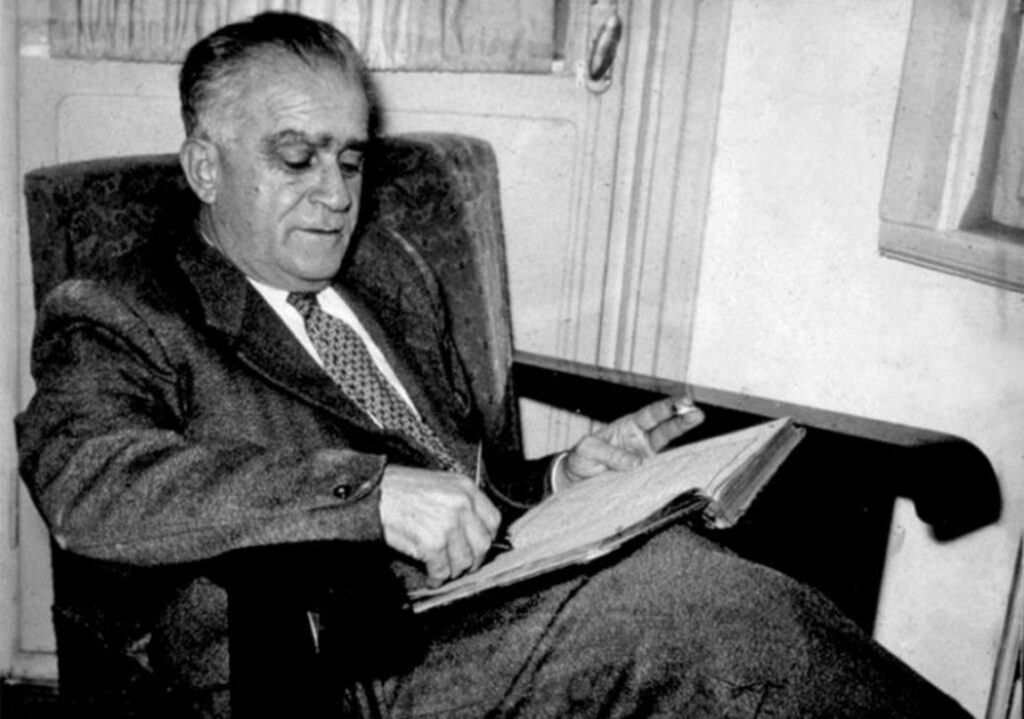
Ömer Seyfettin, the founder and most successful representative of the short story tradition in Turkish literature became the most widely-read author in the country when the 144th edition of his books was published. The writings of Sait Faik Abasiyanik and Sabahattin Ali started two widely different trends. Sait Faik Abasiyanik picked on happenings in Istanbul with intense poetical feeling based on his own experiences. Sabahattin Ali, on the other hand, had a materialistic philosophy and specialized in objective description of simple events. With these two writers, daily life and events, opinions and expectations began to be reflected in literature, a trend that was to intensify in the 1960’s.
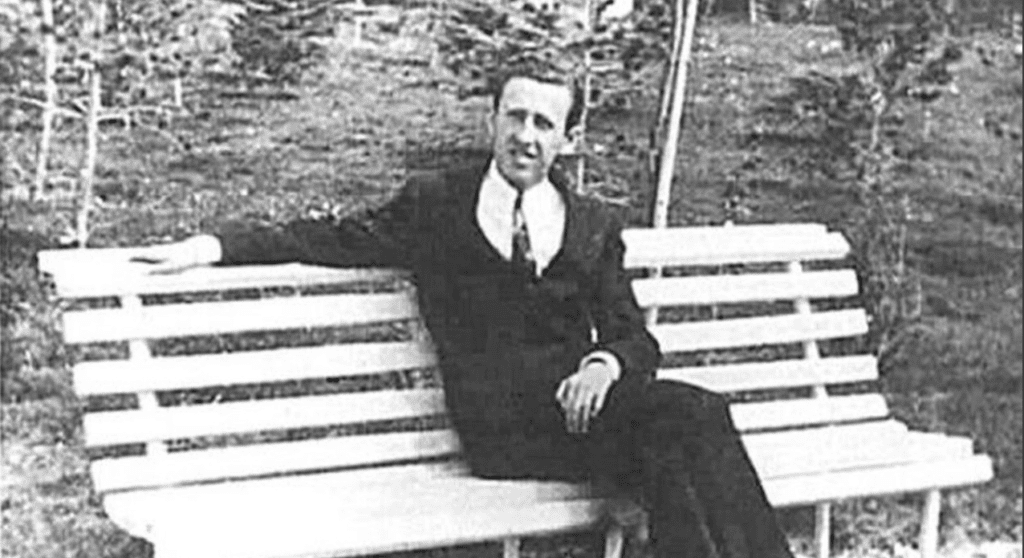
Orhan Veli Kanik published his poems in a book entitled “Garip” in 1941, and two others who shared his style, Melih Cevdet Anday and Oktay Rifat, created a new poetic movement called “Garipciler”, based on the elimination of such formal restrictions as metre, rhyme and analogy hitherto considered to be essential in poetry. They wanted poetry to become a simple expression of feelings. Orhan Veli’s successful poems in free verse greatly influenced those who came after him. Cahit Sitki Taranci achieved the same simplicity through the use of metre and rhyme. Free verse spread rapidly. Asaf Halet Çelebi, Fazil Hüsnü Daglarca and Behçet Necatigil were some of the successful representatives of this style.

The most well-known and widely-read writers of the 1950-1990 period can be listed as follows: Tarik Dursun K., Atilla lhan, Yasar Kemal, Orhan Kemal, Kemal Tahir, Tarik Bugra, Aziz Nesin, Mustafa Necati Sepetçioglu, Firuzan, Adalet Agaoglu, Sevgi Soysal, Tomris Uyar, Selim Ileri, Cevat Sakir (Halikarnas Balikçisi), Necati Cumali, Haldun Taner. Prominent poets in this period are: Behçet Kemal Çaglar, Necati Cumali , Oktay Rifat, Melih Cevdet Anday, Cemal Süreya, Edip Cansever, Özdemir Ince, Ataol Behramoglu, Ismet Özel, Ece Ayhan, Turgut Uyar, Sezai Karakoç, Bahaettin Karakoç, Ümit Yasar Oguzcan, Orhan Pamuk .
Do a Little Reading Before Traveling to Turkey
Are you traveling to Turkey? It may be a good idea for you to do a little bit of light reading before you leave. You’d be surprised at how much books can help you attune to the cultural, religious, and historical aspects of the country. Add some of these books to your reading list and brush up on your knowledge. As accurate as the books are, nothing can prepare you for how amazing Turkey actually is.
Istanbul: Memories and the City by Orhan Pamuk
A shimmering evocation, by turns intimate and panoramic, of one of the world’s great cities, by its foremost writer. Orhan Pamuk was born in Istanbul and still lives in the family apartment building where his mother first held him in her arms. His portrait of his city is thus also a self-portrait, refracted by memory and the melancholy–or–hüzün–that all Istanbullus share: the sadness that comes of living amid the ruins of a lost empire. With cinematic fluidity, Pamuk moves from his glamorous, unhappy parents to the gorgeous, decrepit mansions overlooking the Bosphorus; from the dawning of his self-consciousness to the writers and painters–both Turkish and foreign–who would shape his consciousness of his city. Like Joyce’s Dublin and Borges’ Buenos Aires, Pamuk’s Istanbul is a triumphant encounter of place and sensibility, beautifully written and immensely moving.
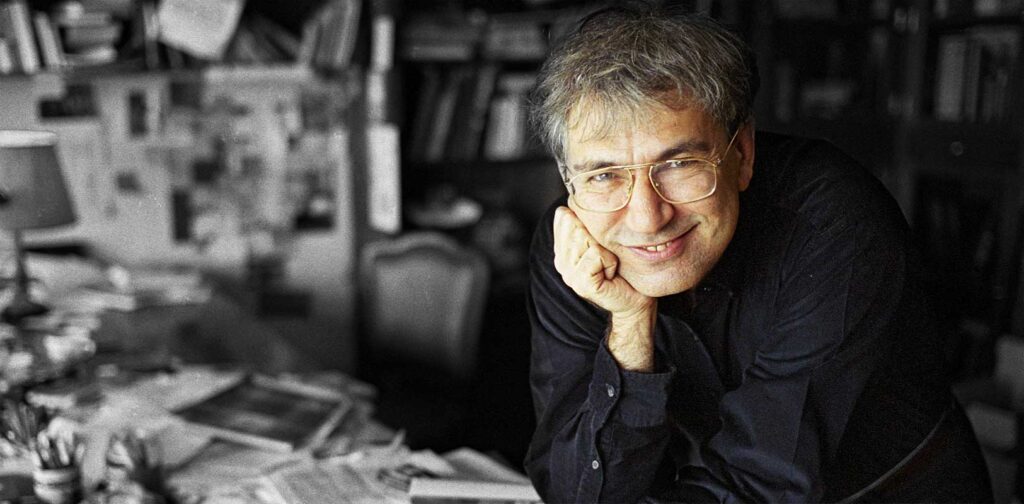
The Western Shores of Turkey: Discovering the Aegean and Mediterranean Coasts by John Freely
Resting on two continents, Turkey reflects and absorbs the cultures of both East and West and nowhere is this more evident than along its Aegean and Mediterranean coasts. This is a land immersed in history and mythology: it is where Anthony met Cleopatra, where Herodotus, the “father” of history, was born and where legendary battles were fought–from Alexander the Great to Gallipoli. The Western Shores of Turkey is the distillation of a succession of journeys that John Freely made along this coast–an odyssey spanning a quarter of a century. By bus, car and caique, on foot and post boat, from Istanbul to Antakya (Antioch) on the Syrian border, he discovered the charm of modern Turkey and the wonders of its past. The result is both an informative guide and a remarkable travelogue for all who follow in his footsteps.
My Name Is Red by Orhan Pamuk

At once a fiendishly devious mystery, a beguiling love story, and a brilliant symposium on the power of art, My Name Is Red is a transporting tale set amid the splendor and religious intrigue of sixteenth-century Istanbul, from one of the most prominent contemporary Turkish writers.The Sultan has commissioned a cadre of the most acclaimed artists in the land to create a great book celebrating the glories of his realm. Their task: to illuminate the work in the European style. But because figurative art can be deemed an affront to Islam, this commission is a dangerous proposition indeed. The ruling elite therefore mustn’t know the full scope or nature of the project, and panic erupts when one of the chosen miniaturists disappears. The only clue to the mystery–or crime? –lies in the half-finished illuminations themselves. Part fantasy and part philosophical puzzle, My Name is Red is a kaleidoscopic journey to the intersection of art, religion, love, sex and power.
Istanbul: City of Majesty at the Crossroads of the World by Thomas F. Madden
The first single-volume history of Istanbul in decades: a biography of the city at the center of civilizations past and present.
For more than two millennia Istanbul has stood at the crossroads of the world, perched at the very tip of Europe, gazing across the shores of Asia. The history of this city–known as Byzantium, then Constantinople, now Istanbul–is at once glorious, outsized, and astounding. Founded by the Greeks, its location blessed it as a center for trade but also made it a target of every empire in history, from Alexander the Great and his Macedonian Empire to the Romans and later the Ottomans. At its most spectacular Emperor Constantine I re-founded the city as New Rome, the capital of the eastern Roman empire, and dramatically expanded the city, filling it with artistic treasures, and adorning the streets with opulent palaces. Around it all Constantine built new walls, truly impregnable, that preserved power, wealth, and withstood any aggressor–walls that still stand for tourists to visit.
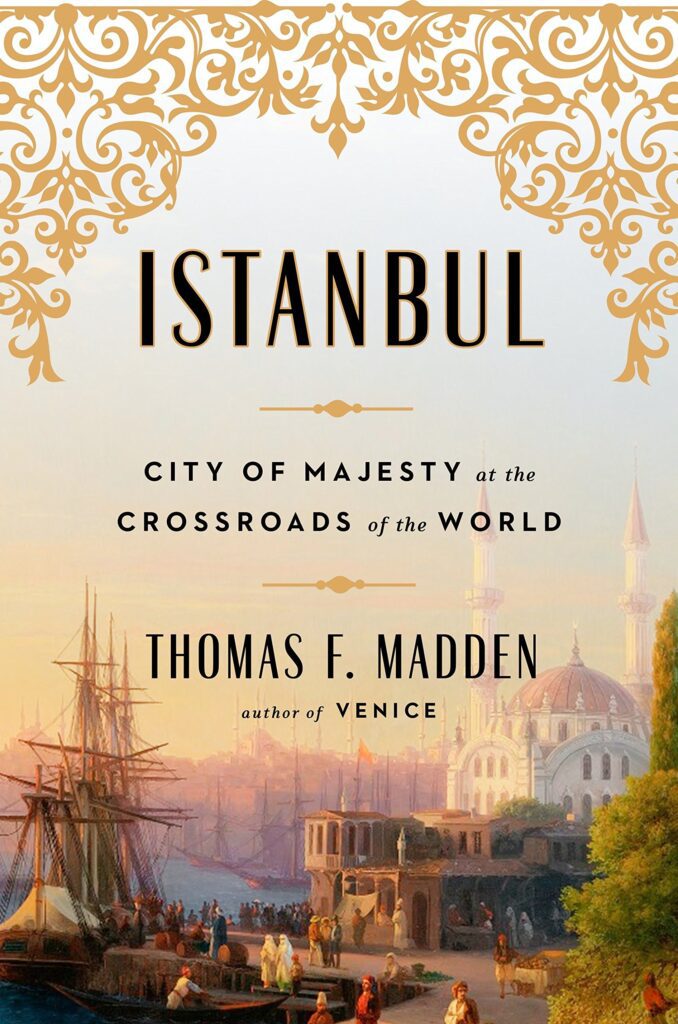
From its ancient past to the present, we meet the city through its ordinary citizens–the Jews, Muslims, Italians, Greeks, and Russians who used the famous baths and walked the bazaars–and the rulers who built it up and then destroyed it, including Mustafa Kemal Ataturk, the man who christened the city “Istanbul” in 1930. Thomas F. Madden’s entertaining narrative brings to life the city we see today, including the rich splendor of the churches and monasteries that spread throughout the city.
Istanbul draws on a lifetime of study and the latest scholarship, transporting readers to a city of unparalleled importance and majesty that holds the key to understanding modern civilization. In the words of Napoleon Bonaparte, “If the Earth were a single state, Istanbul would be its capital.”
Turkish Delights by Philippa Scott
Liotard’s fine portraits of Westerners in Turkish dress, Carpaccio’s turbaned figures, and the coveted “Turkey” carpets that appear in paintings by Lotto and Holbein bear witness to a deep Western fascination with all things Ottoman. It is this cultural influence, spanning five hundred years — from the fall of Constantinople through to the twentieth century — that unites the wealth of paintings, drawings, photography, and decorative objects in this sumptuously illustrated book.The result is a visual feast of Turkish delights, from the exotic allure of the harem and Turkish baths to Ottoman-inspired Western interiors and pavilions; from paintings of Europeans in Turkish costume to carpets, silks, tulips, turbans, Iznik tiles, coffee, tobacco, and croissants.
The delightfully informative text explains how Turkey, the gateway to the East, became a fountain of inspiration for so many artistic and cultural fields — painting, ceramics, textiles, interiors, fashion — in the West. Today the many fruits of this cultural meeting, enticingly displayed in this book, will engage a fresh audience with the decorative possibilities of the ravishing colors, motifs, and furnishings of traditional Turkey.
Crescent and Star: Turkey Between Two Worlds by Stephen Kinzer
For centuries few terrors were more vivid in the West than fear of “the Turk,” and many people still think of Turkey as repressive, wild, and dangerous. Crescent and Star is Stephen Kinzer’s compelling report on the truth about this nation of contradictions – poised between Europe and Asia, caught between the glories of its Ottoman past and its hopes for a democratic future, between the dominance of its army and the needs of its civilian citizens, between its secular expectations and its Muslim traditions.
Kinzer vividly describes Turkey’s captivating delights as he smokes a water pipe, searches for the ruins of lost civilizations, watches a camel fight, and discovers its greatest poet. But he is also attuned to the political landscape, taking us from Istanbul’s elegant cafes to wild mountain outposts on Turkey’s eastern borders, while along the way he talks to dissidents and patriots, villagers and cabinet ministers. He reports on political trials and on his own arrest by Turkish soldiers when he was trying to uncover secrets about the army’s campaigns against Kurdish guerillas. He explores the nation’s hope to join the European Union, the human-rights abuses that have kept it out, and its difficult relations with Kurds, Armenians, and Greeks.
Will this vibrant country, he asks, succeed in becoming a great democratic state? He makes it clear why Turkey is poised to become “the most audacious nation of the twenty-first century.”
Living in Istanbul by Kenizé Mourad
Istanbul has been the capital of Roman emperors, Byzantine despots, and Turkish sultans. Stretching along both sides of the Bosporus from the Sea of Marmara to the Black Sea, it occupies one of the most extraordinary geographical locations on earth. Vestiges of the diverse cultures that have flourished here– Greek, Roman, Byzantine, and Ottoman– survive in modern Istanbul, where different quarters are still divided by what the Byzantine poet Procopius once called a ‘garland of waters.’
In this superb volume, the authors reveal the unique lifestyle and hidden splendours of Istanbul, inciting us to discover an infinite variety of charming private homes, delicate wooden “yalis,” and magnificent palaces on the European and Asian shores of the Bosporus. These sumptuous dwellings– whether modern or traditional, intimate or spectacular– are imbued with the magic of the water and light, of copper and wood, and a sophisticated combination of Eastern and Western influences.
Plunging into the daily life of the bustling city, the exotic Covered Bazaar and celebrated Egyptian Market beckon, where, after sampling the delicious local products, tired visitors may pause for a refreshing glass of tea in a sidewalk café . In the “hans”– former caravan depots which now serve as workshops for traditional craftsmen– kilims, carpets, painted tiles, and other marvelous creations abound, and the sacred art of calligraphy is still practiced.
Stunning photographs by Jé rô me Darblay, specially commissioned for this volume, unveil the secrets of this ancient city, while an extensive visitor’s guide to hotels, restaurants, traditional shops, museums and other attractionsprovides information for the discriminating traveller to discover Istanbul’s thousand-and-one delights
Atatürk: The Biography of the Founder of Modern Turkey by Andrew Mango
Mustafa Kemal Atatürk was virtually unknown until 1919, when he took the lead in thwarting the victorious Allies’ plan to partition the Turkish core of the Ottoman Empire. He divided the Allies, defeated the last Sultan, and secured the territory of the Turkish national state, becoming the first president of the new republic in 1923, fast creating his own legend. Andrew Mango’s revealing portrait of Atatürk throws light on matters of great importance today-resurgent nationalism, religious fundamentalism, and the reality of democracy.
Turkey: A Modern History by Erik-Jan Zürcher
His revised edition builds upon and updates the twin themes of Turkey’s continuing incorporation into the capitalist world and the modernization of state and society. It begins with the forging of closer links with Europe after the French Revolution, and the changing face of the Ottoman Empire in the 19th century. In his account of the period since 1950, Zürcher focuses on the growth of mass politics; the three military coups; the issue of Turkey’s human right’s record; integration into the global economy; the alliance with the West and relations with the European Community; and much more.
The Bastard of Istanbul by Elif Şafak

As an Armenian American living in San Francisco, Armanoush feels like part of her identity is missing and that she must make a journey back to the past, to Turkey, in order to start living her life. Asya is a nineteen-year-old woman living in an extended all-female household in Istanbul who loves Jonny Cash and the French existentialists. The Bastard of Istanbul tells the story of their two families–and a secret connection linking them to a violent event in the history of their homeland. Filed with humor and understanding, this exuberant, dramatic novel is about memory and forgetting, about the need to examine the past and the desire to erase it, and about Turkey itself.








